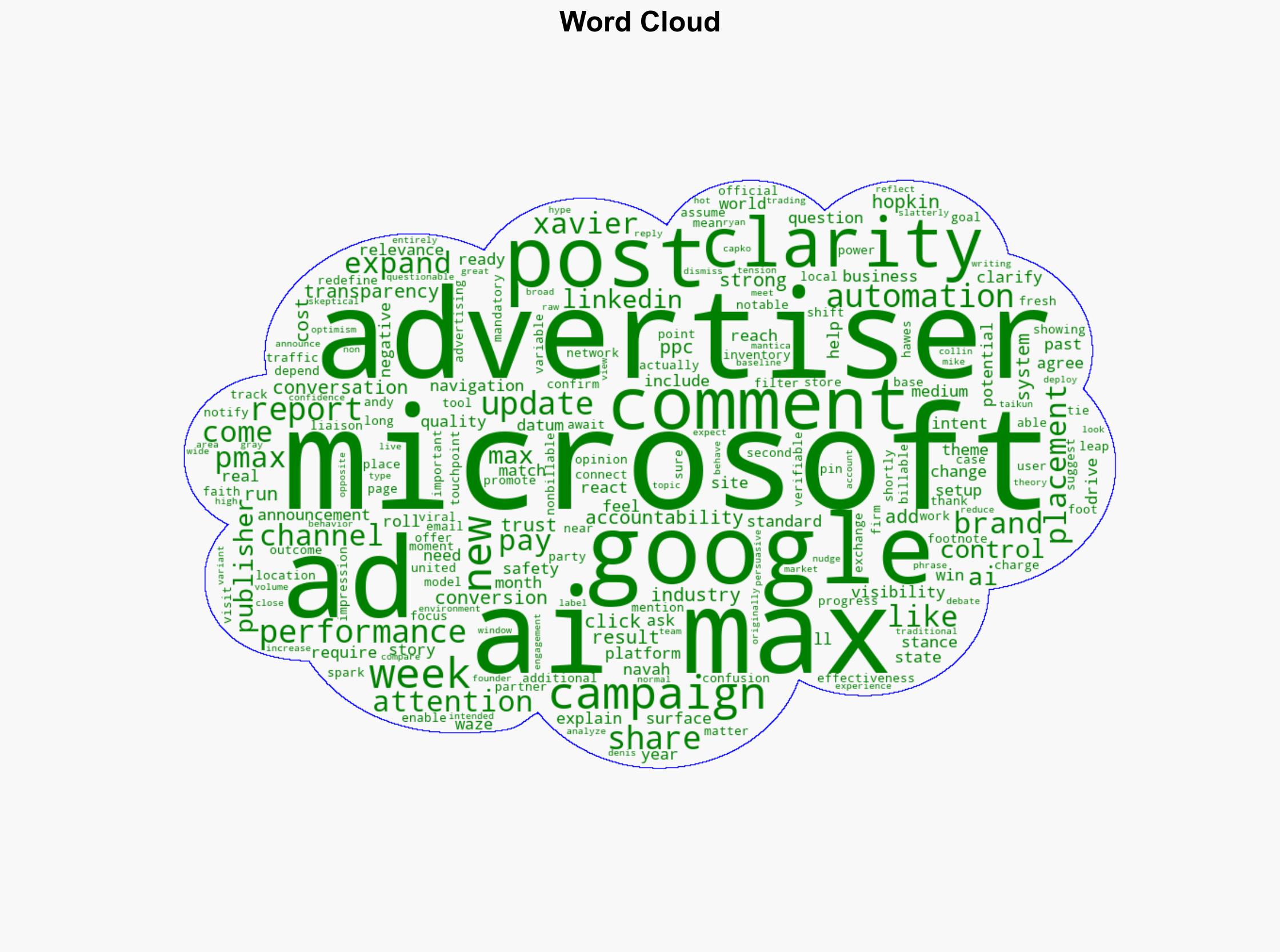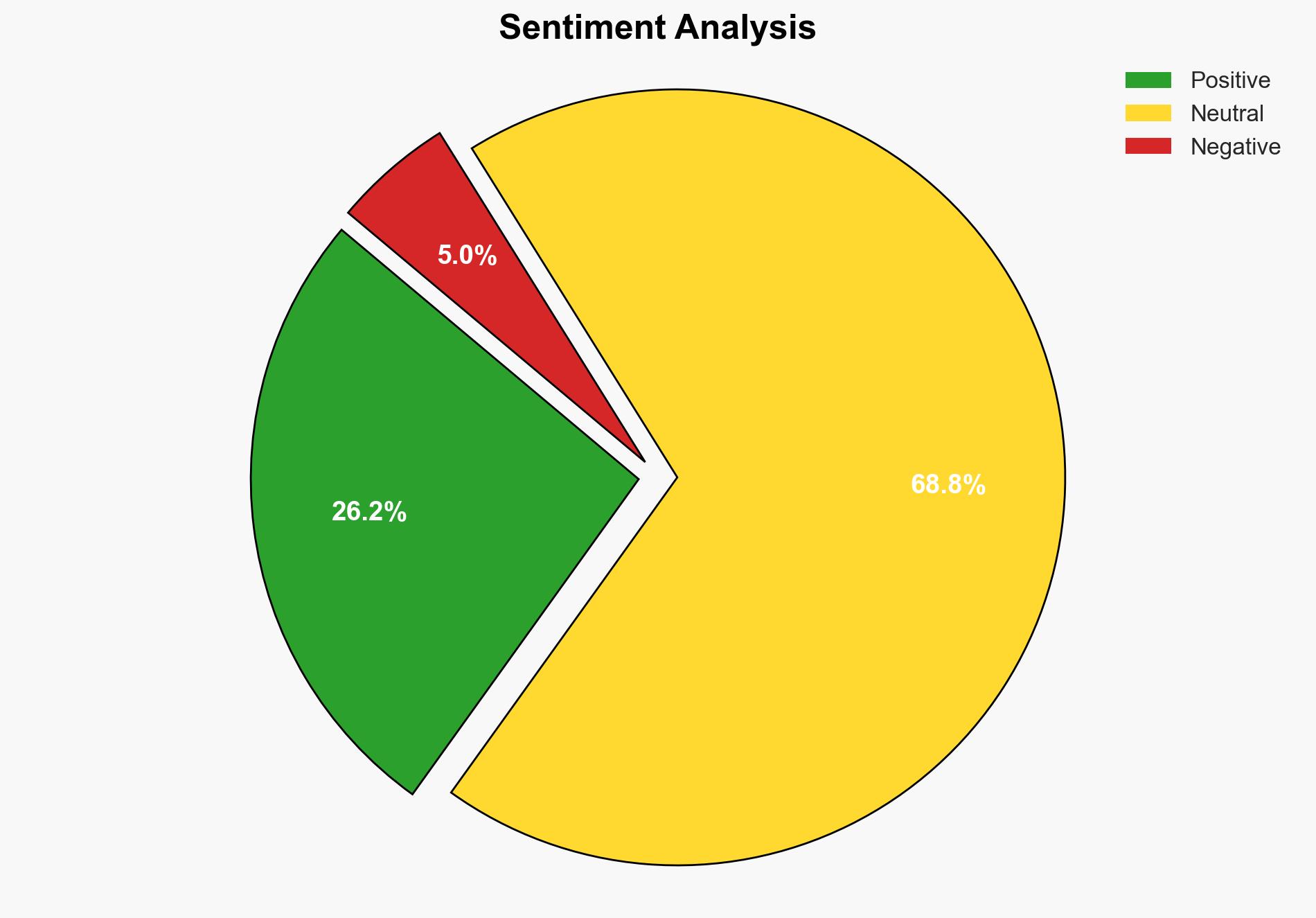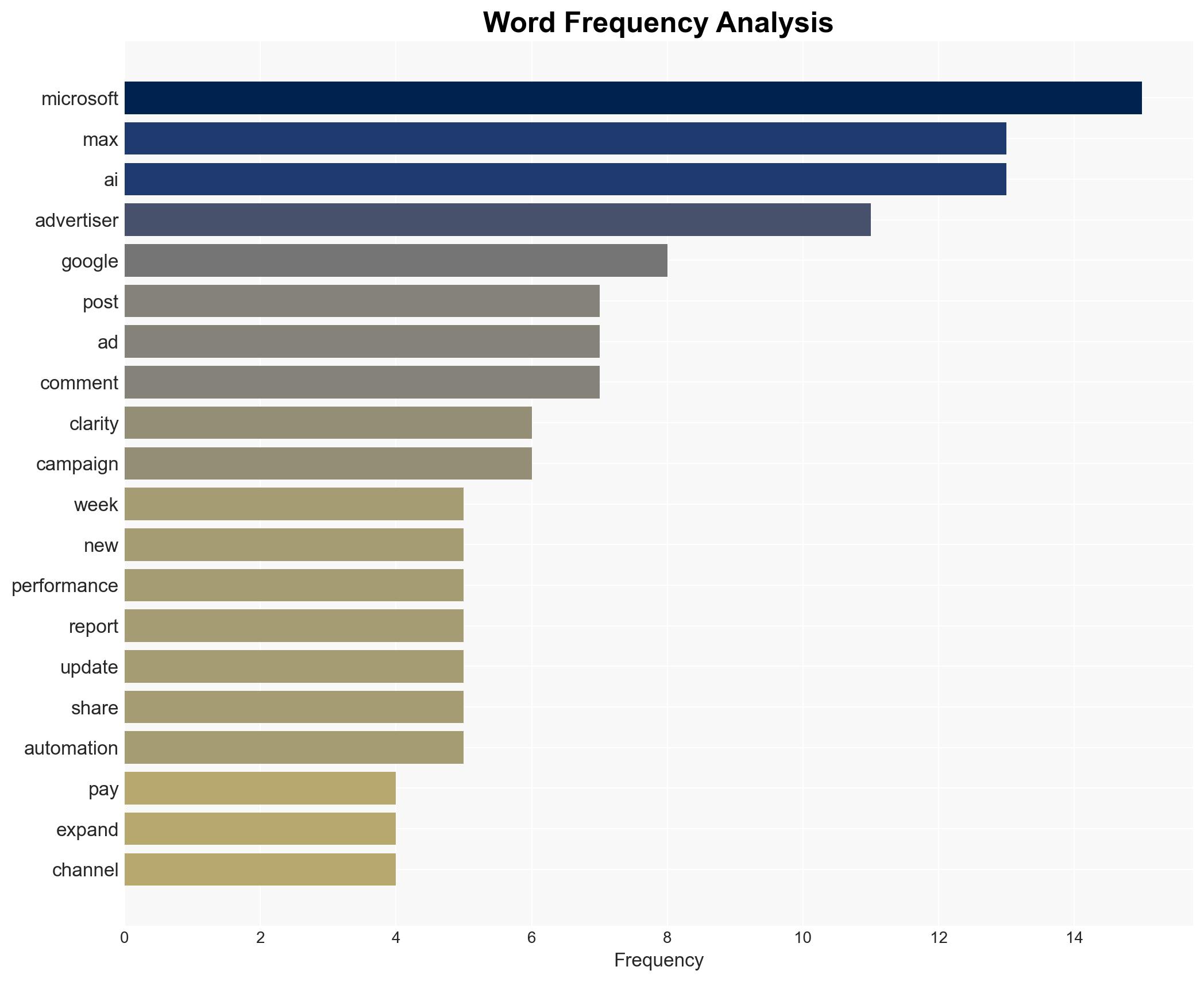PPC Pulse PMax Expands Clarity Now Mandatory AI Max Data Debate via sejournal brookeosmundson – Search Engine Journal
Published on: 2025-11-14
AI-powered OSINT brief from verified open sources. Automated NLP signal extraction with human verification. See our Methodology and Why WorldWideWatchers.
Intelligence Report: PPC Pulse PMax Expands Clarity Now Mandatory AI Max Data Debate via sejournal brookeosmundson – Search Engine Journal
1. BLUF (Bottom Line Up Front)
The expansion of Google’s Performance Max (PMax) and Microsoft’s new clarity requirements reflect a significant shift towards greater transparency and accountability in digital advertising. The most supported hypothesis is that these changes are driven by increasing demands for brand safety and advertiser trust. With a medium confidence level, it is recommended that advertisers adapt to these changes by enhancing their data analytics capabilities and closely monitoring campaign performance to optimize outcomes.
2. Competing Hypotheses
Hypothesis 1: The changes in PMax and Microsoft’s clarity requirements are primarily driven by a need to increase transparency and accountability in response to advertiser demands for brand safety.
Hypothesis 2: The changes are a strategic move by Google and Microsoft to preempt regulatory scrutiny and potential legal challenges related to data privacy and advertising practices.
Assessment: Hypothesis 1 is more likely given the current industry trends and the emphasis on brand safety and trust in the advertising community. Hypothesis 2, while plausible, lacks direct evidence of regulatory pressure at this time.
3. Key Assumptions and Red Flags
Assumptions: It is assumed that advertisers will prioritize transparency and accountability over raw reach. It is also assumed that Google and Microsoft’s changes are genuine efforts to improve advertiser trust.
Red Flags: Potential deception indicators include the possibility that these changes are more about public relations than substantive improvements. Additionally, the lack of detailed data on the effectiveness of AI Max could be a red flag for over-promising capabilities.
4. Implications and Strategic Risks
The shift towards transparency could lead to increased scrutiny of advertising practices, potentially exposing vulnerabilities in data handling and privacy. Economically, advertisers may face higher costs as they adapt to new reporting requirements and optimize their campaigns. Informational risks include the potential for misinformation if the changes are not clearly communicated or understood by all stakeholders.
5. Recommendations and Outlook
- Advertisers should invest in advanced data analytics tools to better understand and leverage the new reporting capabilities.
- Engage in proactive communication with Google and Microsoft to clarify any uncertainties regarding the changes.
- Best-case scenario: Advertisers achieve greater campaign efficiency and ROI through improved transparency.
- Worst-case scenario: Increased costs and complexity without corresponding improvements in campaign performance.
- Most-likely scenario: A gradual adaptation period where advertisers adjust to new norms and reporting standards.
6. Key Individuals and Entities
Navah Hopkins (Microsoft Ads Liaison), Andy Hawes, Xavier Mantica, Collin Slatterly (Founder of Taikun), Mike Ryan, Denis Capko.
7. Thematic Tags
Cybersecurity, Digital Advertising, Brand Safety, Data Privacy, AI in Marketing
Structured Analytic Techniques Applied
- Adversarial Threat Simulation: Model and simulate actions of cyber adversaries to anticipate vulnerabilities and improve resilience.
- Indicators Development: Detect and monitor behavioral or technical anomalies across systems for early threat detection.
- Bayesian Scenario Modeling: Quantify uncertainty and predict cyberattack pathways using probabilistic inference.
- Network Influence Mapping: Map influence relationships to assess actor impact.
Explore more:
Cybersecurity Briefs ·
Daily Summary ·
Support us
·





